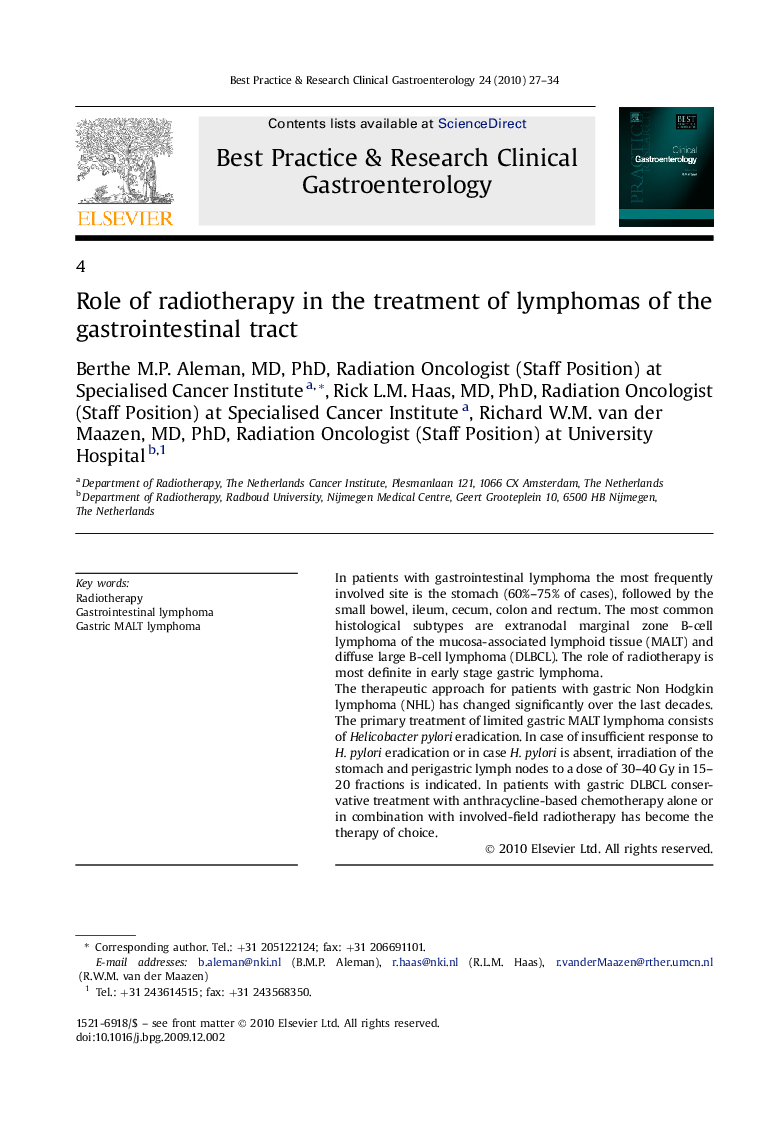| Article ID | Journal | Published Year | Pages | File Type |
|---|---|---|---|---|
| 3254397 | Best Practice & Research Clinical Gastroenterology | 2010 | 8 Pages |
In patients with gastrointestinal lymphoma the most frequently involved site is the stomach (60%–75% of cases), followed by the small bowel, ileum, cecum, colon and rectum. The most common histological subtypes are extranodal marginal zone B-cell lymphoma of the mucosa-associated lymphoid tissue (MALT) and diffuse large B-cell lymphoma (DLBCL). The role of radiotherapy is most definite in early stage gastric lymphoma.The therapeutic approach for patients with gastric Non Hodgkin lymphoma (NHL) has changed significantly over the last decades. The primary treatment of limited gastric MALT lymphoma consists of Helicobacter pylori eradication. In case of insufficient response to H. pylori eradication or in case H. pylori is absent, irradiation of the stomach and perigastric lymph nodes to a dose of 30–40 Gy in 15–20 fractions is indicated. In patients with gastric DLBCL conservative treatment with anthracycline-based chemotherapy alone or in combination with involved-field radiotherapy has become the therapy of choice.
